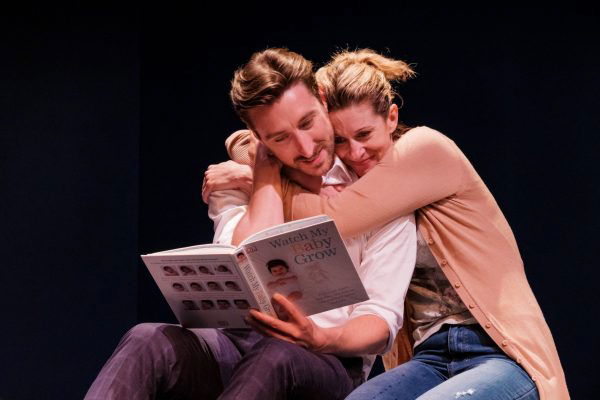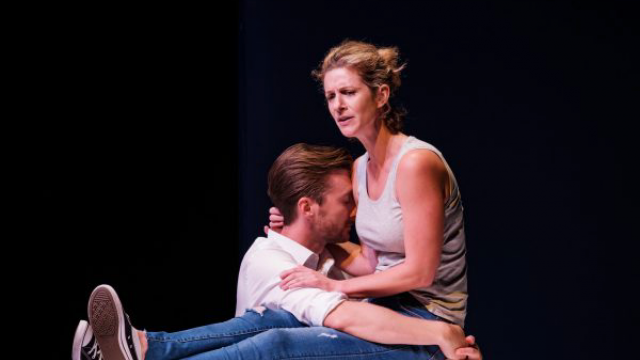King of Pigs
What is shocking is how familiar all this is. Three every-day domestic horrors play out, simultaneously harrowing and horrifyingly ordinary. This is brutal and honest theatre.
Blazey Best’s direction is tight. Everything rings devastatingly true: the situations, the cadences and dialogue, the justifications and the emotions. Every posture is perfect – Anthony Yangoyan as the ex-footballer, both slumped but somehow open and resigned in an anger management group, hands awkwardly on his lap, legs in a classic manspread, acknowledging that he’d screwed up his own life. A new young couple (Kate Skinner and Tom Stokes) in the flush of love, sitting with his arms and body all around hers in way that looks loving and protective but on closer inspection is constraining. Sam Alhaje’s confident swagger as he and a work colleague blithely demean a young woman he had deliberately lead into a group rape. Even the sole model of non-toxic manhood on stage, Jason Chong, pressures his son to conform to male norms and succeed.

The most important performer though is Kate Skinner, whose depiction of the three women is flawless. Each of these women is distinctly different and beautifully drawn. The young woman flirting in a Gold Coast nightclub, movements sinuous and free, with a cheeky voice and so painfully vulnerable. The young wife whose confidence slowly ebbs away in front of your eyes. The older mother pacing at the police station recounting an incident, her voice one moment emotionless in shock, the next nearly shouting as the anger breaks through. It’s all very real.

The stage and sound designs are economical and clever. Isabel Hudson’s set includes a mirror at the back, so the action can be viewed from more than one perspective, both literally and figuratively. Verity Hampson’s lighting casts crisp, dark shadows on the walls which emphasise the impending violence.
If I have a criticism, it’s that I am unsure about the device of having one actor play all the women, where the male actors in the main play one role each. It makes sense from a dramatic perspective as the woman actor is central, but from a cultural perspective there is a risk that the women could be seen by the audience as a generic victim figure, even with performances as excellent as Kate Skinner’s. Would it have detracted to have as many women on stage as there were men?

This play asks raises questions but doesn’t presume to offer answers, not least because this is a question we as a society are still grappling with. It’s too late to catch this production now as it’s reached the end of the tour, but it’s an important topic and I hope it returns.
Cathy Bannister
Photographer: Robert Catto
Subscribe to our E-Newsletter, buy our latest print edition or find a Performing Arts book at Book Nook.

